#Contract Closeouts
Explore tagged Tumblr posts
Text
...whelp my husbands company has already started moving 100s of thousands of production orders from vietnam to china in preparation for tariffs being added onto vietnamese shipments, cause chinese labor is cheaper.......
and my company is starting to hoarde more blank garments that get printed in the usa in preparation as a stockpile.....which means my imports blank sourcing guy at work seems to be having a minor breakdown
this is gonna be a fucking shitshow.
#personal#if my bonus/raise get screwed up or his bonus/raise get screwed up this year imma be MAD????#i mean i already got a mini company wide raise (ish) cause theyre covering more of our health insurance starting next year#but ugh?#with the viet factories vs the chinese...... its cuz rn theyre about same cost per item overall#but they absolutely HATE working with chinese manufacturers lmfaooo?#like....they had a factory at one point that was a supposedly mostly private owned#turned out it was a lie and was ccp ownership and they tried to refuse to let them out of a contract#and threated to arrest the production lead at the shanghai office for his company............... who was chinese-canadian#with..... a canadian citizenship (this was during the same time as the huawei shitshow lol......)#so they were forced to continue using it until contract expired.....but they had like a 10% error rate on items and#then had to send a shitton to lot less and other closeout stores =_=
2 notes
·
View notes
Text
Contract Closeout In Small Business Federal Government Contracting
Becoming informed on GOVERNMENT CONTRACT CLOSEOUT steps and putting in place processes to support them in your business system is a most important general principal to remember.

View On WordPress
0 notes
Text
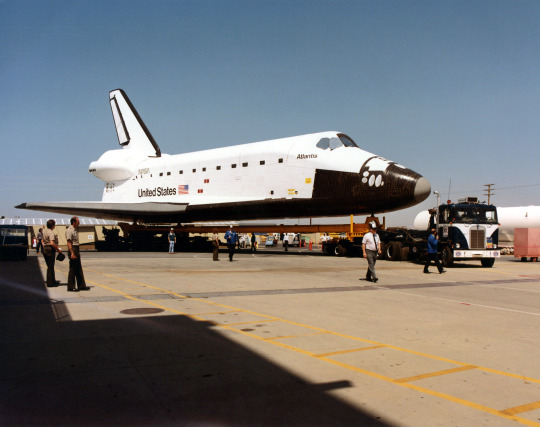
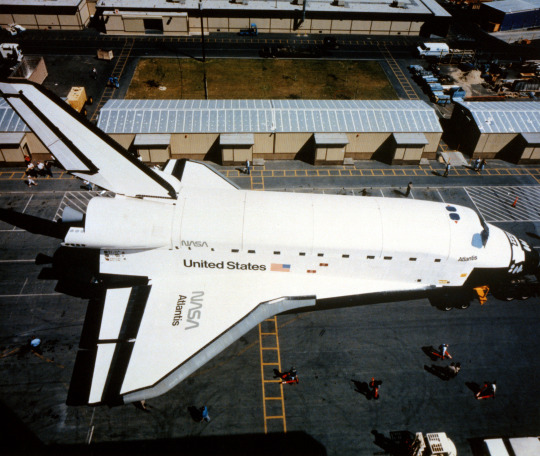
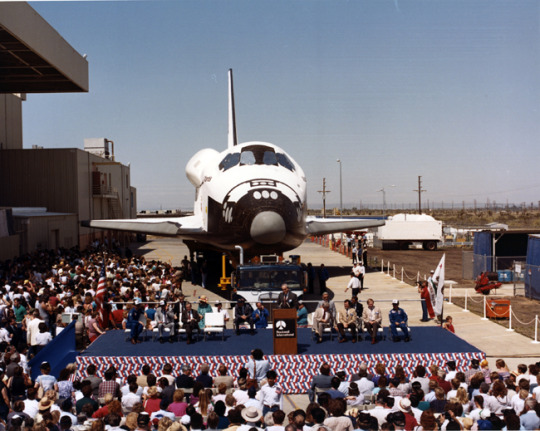
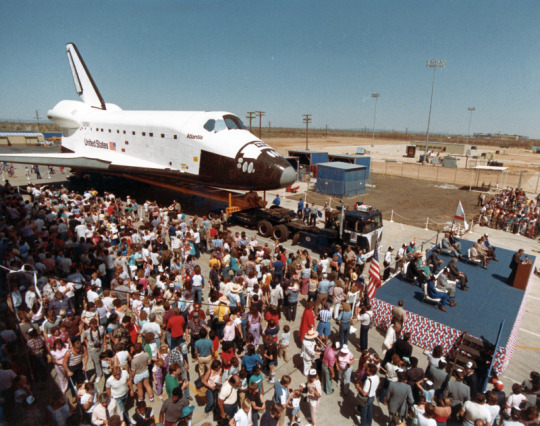
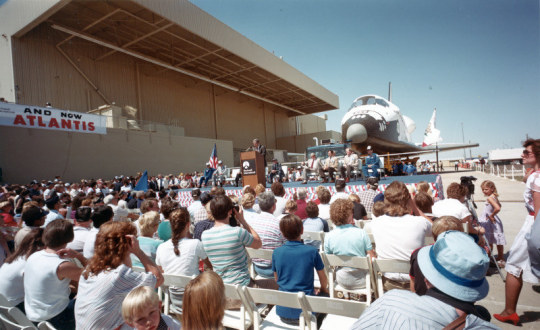
Atlantis (OV-104) rolled out ceremony from Building 150 at the Palmdale, California. The orbiter was delivered to Kennedy Space Center on April 9.

Atlantis was named after RV Atlantis, a two-masted sailing research vessel operated by the Woods Hole Oceanographic Institution. From 1930 to 1966, she made 299 cruises and covered 700,000 miles while conducting oceanographic research.
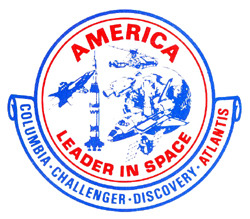
Commemorative stamp from Rockwell International
Construction milestones:
1979 January 29: Contract Award to Rockwell International's Space Transportation Systems Division
1980 March 30: Start structural assembly of crew module
1980 July 28: start fabrication of aft-fuselage
1980 October 1: start fabrication of mid-fuselage
1981 June 1: start fabrication of elevons
1981 June 1: start fabrication of wings
1981 July 13: start fabrication of crew module
1981 October 19: start fabrication of lower forward-fuselage
1981 November 23: start structural assembly of aft-fuselage
1981 December 9: start fabrication of upper forward-fuselage
1982 February 15: start structural assembly of crew module
1982 May 24: start fabrication of forward RCS module
1982 July 7: start structural assembly of payload bay doors
1982 October 4: start fabrication/assembly of vertical stabilizer
1982 November 12: start fabrication of OMS/RCS pods
1983 March 14: start fabrication/assembly of body flap
1983 May 6: Mid-fuselage on dock, Palmdale, arrived from General Dynamics
1983 June 13: Wings on dock, Palmdale, from Grumman
1983 June 17: elevons on dock, Palmdale
1983 November 7: lower forward-fuselage on dock, Palmdale
1983 December 2: payload bay doors on dock, Palmdale
1983 December 2: Start of final assembly
1984 January 6: upper forward-fuselage on dock, Palmdale
1984 January 20: body flap on dock, Palmdale
1984 February 17: left hand OMS/RCS pod on dock, Palmdale
1984 February 24: right hand OMS/RCS pod on dock, Palmdale
1984 March 16: aft-fuselage on dock, Palmdale
1984 April 9: crew module on dock, Palmdale
1984 April 24: upper forward-fuselage on dock, Palmdale
1984 April 27: forward RCS on dock, Palmdale
1984 May 25: Final assembly and closeout installation, Palmdale
1984 May 28: start initial subsystem test, power-on, Palmdale
1984 August 10: complete initial subsystem test, power-on, Delta F, Palmdale
1984 October 26: complete subsystem tests, Palmdale
1985 March 6: Rollout from Palmdale
Date: March 6, 1985

source, source, source, source
Boeing Images: link
SDASM Archives: 5349995, 75349983
#Space Shuttle#Space Shuttle Atlantis#Atlantis#OV-104#Orbiter#NASA#Space Shuttle Program#rollout ceremony#Palmdale#California#March#1985#my post
40 notes
·
View notes
Text
As Boeing's first crewed Starliner test flight nears the 80-day mark of what was initially an eight-day mission, NASA leaders will give an update on Saturday (Aug. 24) to outline their plan on how to return Starliner's astronaut crew to Earth.
The press conference, which is scheduled for Saturday at 1 p.m. EDT (1700 GMT), will include NASA Administrator Bill Nelson and other agency leadership as they discuss plans to return Boeing Starliner astronauts Butch Wilmore and Sunita Williams home. You'll be able to watch the press briefing live on this page, courtesy of NASA TV.
The two astronauts launched to the International Space Station on Starliner on June 5, but saw their mission extended over two months as Boeing and NASA studied helium leaks and thruster issues on the spacecraft.
"NASA and Boeing have gathered data, both in space and on the ground, regarding the Starliner spacecraft's propulsion and helium systems to better understand the ongoing technical challenges," NASA officials wrote in a statement Thursday (Aug. 22). "The review will include a mission status update, review of technical data and closeout actions, as well as certify flight rationale to proceed with undocking and return from the space station."
Nelson and NASA leadership will discuss that flight rationale in an internal Agency Test Flight Readiness Review at the Johnson Space Center in Houston on Saturday before the press conference to share the meeting's results.
Last week, NASA officials said they were studying several options for how to return Boeing's Starliner and its crew to Earth. Those include the astronauts landing on Starliner as planned or returning Starliner to Earth empty while its astronauts make their own landing on a SpaceX Dragon spacecraft. A final decision must be made by the end of August to allow time for planning, agency officials said.
Boeing's Starliner spacecraft is one of two commercial vehicles NASA picked to fly astronauts to and from the International Space Station under its Commercial Crew Program. SpaceX's Crew Dragon capsule is the other. SpaceX has flown nine crewed flights for NASA since 2020 (and several private missions of its own), while Boeing's Starliner's current mission, called the Crew Flight Test, is the company's first of at least six planned crewed missions for NASA under the multibillion-dollar contract.
2 notes
·
View notes
Text
Is There a Great Construction Consultant for Commercial Real Estate and Multifamily Development?
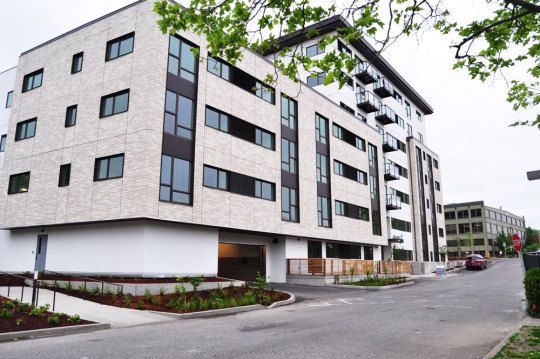
Real estate construction consultants have become increasingly important in the current economy, particularly in the development of commercial real estate and multifamily housing. As the real estate market continues to flourish, there is increased competition among developers to secure projects and complete them on time and on budget. It is therefore increasingly important for developers to partner with experienced construction consultants that can help them navigate the ever-changing landscape of building regulations, zoning standards, and other legal requirements.
BC Group Inc. is a full-service construction consulting firm that specializes in providing comprehensive advice on commercial real estate development and multifamily housing projects throughout the western United States focusing on Oregon and Washington. With more than 20 years of experience in the industry, BC Group has established itself as one of the leading multifamily development advisors. The company provides comprehensive advice on how to maximize value from each project through efficient planning, budgeting, execution, and delivery stages.
At BC Group their team consists of highly trained experts who are familiar with all aspects of developing successful projects in any market. Their team includes architectural designers, construction specialists, financial advisors, attorneys, engineers, surveyors, draftspeople, and project managers – all working together to ensure that each project meets or exceeds clients’ expectations while staying within budget constraints. By leveraging their expertise in design-build delivery systems along with effective cost estimating tools such as electronic document management systems (EDMS), BC Group’s team can minimize risk exposure while maximizing quality assurance during every stage of development.
In addition to providing consulting services for both commercial real estate developments and multifamily housing projects nationwide, BC Group’s team is also well versed in public/private partnerships (PPP) agreements for local ordinances or state legislation related to green initiatives or emerging technologies like solar or wind power systems. By leveraging their PPP experience early on in the development process they can help clients find opportunities for incentive funding or tax credits that will help make their projects more economically feasible while still meeting all applicable standards set by regulatory agencies such as HUD or EPA standards.
BC Group's services extend beyond just advising during the planning stages; they provide full-service support throughout every phase of construction including site selection/development; preconstruction planning; bid tracking and evaluation; contract negotiations; risk assessment and management; field supervision and inspection; cost control and mediation; change order management; dispute resolution assistance; completion inspections and closeout assistance; progress payment tracking/analysis; post construction warranty monitoring/resolution assistance; final punch list review/completion assistance; LEED certification compliance guidance and much more!
When it comes to finding a reliable consultant for commercial real estate development or multifamily housing needs look no further than BC Group. With decades of collective experience under their belt combined with unique strategies for minimizing risk exposure without compromising quality assurance makes them one of the premier consultancies for any budget conscious developer looking to maximize value from their investment property portfolio. Originally published at - https://bcgroup268.livejournal.com/442.html
#real estate construction consultants#commercial real estate development#multifamily development advisors
2 notes
·
View notes
Text
Expert Construction Management as Agent for Seamless Project Success

Construction projects demand precision, strategic execution, and a commitment to delivering results within budget and on schedule. Professional construction management as an agent (CMa) serves as a cornerstone for achieving these objectives, ensuring a streamlined approach to every phase of the project lifecycle. With Armand Corporation as your trusted partner, you gain unparalleled expertise, proactive collaboration, and a results-driven strategy tailored to your needs.
What is Construction Management as Agent (CMa)?
CMa is a project delivery method where the construction manager acts exclusively as an advocate for the project owner, providing oversight, expertise, and coordination throughout the project's lifecycle. Unlike other models, CMa eliminates conflicts of interest, focusing solely on the owner's goals and best interests.
Key Benefits of Construction Management as Agent
1. Unbiased Advocacy for Owners
The CMa model ensures transparency and fairness by representing only the owner's interests. This means every decision, from contractor selection to resource allocation, is made with your project's success as the priority.
2. Enhanced Cost Control
With CMa, owners benefit from detailed budget management, accurate cost estimates, and stringent monitoring of expenditures. This proactive approach minimizes overruns and ensures optimal allocation of financial resources.
3. Seamless Coordination
From design through construction, the CMa oversees every stakeholder, including architects, engineers, and contractors. This streamlined communication fosters collaboration and reduces mismanagement risks, ensuring a unified approach.
4. Risk Mitigation
A professional construction manager identifies potential risks early and implements strategies to mitigate them. This foresight minimizes delays, disputes, and unexpected costs, safeguarding the project's timeline and quality.
5. Tailored Expertise
Every project is unique, and the CMa model allows for customized solutions. By understanding the owner's goals, the construction manager adapts strategies and decisions to meet specific objectives, enhancing the overall outcome.
How CMa Differs from Other Construction Management Models
CMa vs. Construction Management at Risk (CMAR) While CMAR involves the construction manager assuming contractual risk, CMa focuses on advisory roles, maintaining an impartial stance to protect the owner's interests.
CMa vs. Design-Build (DB) Unlike the DB model, where design and construction responsibilities lie with one entity, CMa provides independent oversight, ensuring checks and balances throughout the project.
Key Responsibilities of a Construction Manager as Agent
Pre-Construction Planning
Collaborating with the owner to define project objectives, scope, and budget.
Developing comprehensive schedules and milestones.
Assisting in design reviews and ensuring constructability.
Procurement Management
Managing contractor selection through competitive bidding.
Reviewing contracts to ensure alignment with the owner’s goals.
Construction Phase Oversight
Monitoring daily progress to maintain timelines.
Resolving on-site challenges efficiently.
Ensuring quality control and compliance with safety standards.
Post-Construction Support
Overseeing final inspections and punch-list completion.
Managing project closeout documentation.
Assisting with warranty follow-ups and maintenance planning.
Why Choose Armand Corporation for Your CMa Needs?
Armand Corporation, with its decades of expertise in construction management, stands as a leader in delivering innovative solutions tailored to client needs. Our team combines technical proficiency with a customer-first approach, ensuring every project is a testament to quality and efficiency.
With a track record of successful projects across diverse industries, Armand Corporation brings unparalleled insight, professionalism, and dedication to each endeavor. Whether you're embarking on a public infrastructure project or a private commercial build, our CMa services guarantee superior results.
Marketing Advantages of Choosing Professional CMa
Increased ROI
Investing in CMa services ensures better financial outcomes by reducing waste, avoiding costly errors, and optimizing project resources.
Improved Stakeholder Confidence
Transparent processes, frequent reporting, and consistent updates build trust among stakeholders, ensuring a cohesive and motivated project team.
Enhanced Market Reputation
Projects managed under the CMa model are known for their adherence to quality and deadlines, elevating your organization’s market credibility.
Sustainability and Innovation
By incorporating modern technologies and sustainable practices, CMa professionals lead the way in environmentally responsible construction.
Real-World Impact of Construction Management as Agent
Efficient Public Sector Projects Governments and municipalities benefit significantly from CMa services, where accountability, cost-efficiency, and transparency are paramount.
Private Commercial Developments Businesses investing in office spaces, retail centers, or industrial facilities rely on CMa to meet aggressive timelines without compromising quality.
Educational and Healthcare Facilities Schools and hospitals, with their complex requirements, are better served by the CMa approach, which ensures that safety, functionality, and compliance are priorities.
Conclusion
Professional construction management as agent transforms the complexities of construction into a seamless, owner-focused experience. With unparalleled benefits such as cost control, risk mitigation, and enhanced coordination, CMa empowers owners to achieve their project goals efficiently and transparently. By choosing Armand Corporation as your trusted partner, you gain the expertise and dedication of a team committed to excellence. Let us help you bring your vision to life with precision, integrity, and unparalleled results.
#Construction Management as Agent#Construction Management#Construction Management Company#Construction Management Services
0 notes
Text
Developing an Acquisition Schedule: A Step-by-Step Guide
An acquisition schedule is an essential project management tool for effectively planning and managing the procurement of goods and services. Whether you're working on a government contract, a large corporate project, or a smaller initiative, creating an acquisition schedule helps ensure timely and efficient procurement, reduces risks, and aligns with overall project timelines. In this guide, we will walk through the process of developing an acquisition schedule from start to finish.
1. Define the Acquisition Requirements
The first step in developing an acquisition schedule is understanding and defining the specific procurement needs for the project.
Identify the Goods or Services: Clearly define the items, materials, or services required for the project. This could include anything from office supplies, IT equipment, construction materials, to specialized consulting services.
Establish Procurement Objectives: Understand the desired outcomes of the procurement process. Are you looking for cost savings, quality assurance, sustainability, or specific expertise? These objectives will help guide the selection process and influence the acquisition schedule.
Determine Compliance and Regulatory Needs: Understand if there are specific legal, regulatory, or compliance requirements for your acquisitions. Government projects, for example, may have certain procurement guidelines that must be adhered to.
2. Identify Key Milestones and Phases
An acquisition schedule should break down the procurement process into specific milestones or phases. Identifying these phases will give a clear timeline for each acquisition activity.
Planning and Documentation: This phase includes drafting requirements, preparing the statement of work (SOW), developing acquisition strategies, and completing any required documentation.
Milestone: Completion of acquisition strategy and requirements document.
Solicitation: This phase involves issuing the request for proposal (RFP), request for quotation (RFQ), or invitation to bid (ITB). It also includes reviewing proposals or bids.
Milestone: Release of RFP/RFQ.
Milestone: Proposal submission deadline.
Evaluation and Selection: Once bids or proposals are submitted, evaluation occurs. This includes reviewing the proposals, scoring, and selecting a vendor or contractor.
Milestone: Proposal review completion.
Milestone: Vendor selection.
Contract Award and Negotiation: After selecting the vendor, the contract negotiation and award phase begins. This includes drafting the contract, finalizing terms, and obtaining approvals.
Milestone: Contract award and signature.
Delivery and Implementation: This phase begins once the vendor starts delivering the goods or services, and it includes monitoring performance and ensuring the delivery of quality outputs.
Milestone: Delivery of goods or services.
Milestone: Completion of installation, if applicable.
Final Acceptance and Closeout: This final phase involves accepting the work or goods, final payment, and closing out the acquisition.
Milestone: Final acceptance and completion.
Milestone: Contract closeout.
3. Develop a Timeline for Each Phase
For each of the identified phases, you need to establish realistic timeframes for completion. Work backward from the project’s overall timeline to ensure each phase aligns with key dates.
Estimate Durations: Determine how long each task or milestone is expected to take. For example:
Planning and Documentation: 2-3 weeks.
Solicitation: 4-6 weeks (including vendor outreach, Q&A, and response time).
Evaluation: 2-3 weeks for reviewing proposals and making a selection.
Negotiation and Award: 1-2 weeks for contract finalization.
Delivery and Implementation: 3-6 months, depending on project complexity.
Account for Delays: Add buffer time for unexpected delays in each phase. This might include time for vendor negotiations, proposal clarifications, or approval delays.
4. Assign Responsibilities
For each phase of the acquisition, assign responsibilities to the appropriate team members or departments. This ensures that the schedule is not only realistic but also feasible.
Planning: Assign procurement specialists or project managers to create and review the SOW and acquisition strategy.
Solicitation: The procurement department or contracts team will handle the creation and release of the RFP/RFQ.
Evaluation: Subject matter experts (SMEs) and a selection committee will review and score vendor proposals.
Contracting: Legal and procurement teams will finalize and negotiate contracts.
Implementation and Delivery: Project managers and operational teams will oversee the delivery, installation, and quality control of the goods or services.
5. Determine Dependencies
Acquisition schedules often have dependencies, where the completion of one task depends on the completion of another. Identifying these dependencies early on is critical for avoiding delays.
Example: The vendor selection cannot begin until all proposals have been submitted, and the contract cannot be finalized until the vendor is selected.
Example: Installation and delivery cannot occur until the procurement and shipping of goods are complete.
Creating a visual representation of these dependencies, such as a Gantt chart, can help you manage and track progress.
6. Create a Detailed Acquisition Schedule
Now that you have defined all phases, timeframes, responsibilities, and dependencies, it’s time to create your acquisition schedule.
Tools: Use tools like Microsoft Excel, Google Sheets, or specialized project management software (e.g., Microsoft Project, Trello, or Smartsheet) to map out the schedule. These tools allow you to visualize timelines, track progress, and adjust tasks as needed.
Gantt Chart: A Gantt chart is a popular way to visualize project timelines, task durations, and dependencies. It allows stakeholders to see a visual representation of the acquisition process.
Critical Path Method (CPM): This project management tool helps identify the longest sequence of dependent tasks, ensuring that the most critical tasks are prioritized in the schedule.
7. Review and Update the Acquisition Schedule
Once the schedule is developed, review it with key stakeholders (e.g., project managers, procurement officers, vendors) to ensure its accuracy. Make adjustments if necessary and align it with the overall project timeline.
Ongoing Monitoring: As the acquisition process progresses, monitor each phase’s status. If there are any delays or issues, update the schedule and communicate changes to all involved parties.
Flexibility: An acquisition schedule should be flexible enough to accommodate unforeseen changes while ensuring that the overall project timeline remains intact. Regularly check the status of procurement and ensure tasks are completed on time.
Example of an Acquisition Schedule
Here’s a sample acquisition schedule for a generic project, presented in a simplified table format:PhaseTaskDurationStart DateEnd DateResponsibilityMilestonePlanning & DocumentationDevelop Statement of Work (SOW)2 weeks01/01/202415/01/2024Procurement, PMSOW completedCreate Acquisition Strategy1 week16/01/202422/01/2024Procurement, LegalAcquisition strategy approvedSolicitationRelease RFP/RFQ4 weeks23/01/202420/02/2024Procurement, ContractsRFP issuedAnswer Vendor Questions1 week21/02/202428/02/2024Procurement, VendorsQ&A period closedProposal Submission Deadline1 week01/03/202408/03/2024VendorsProposals receivedEvaluation & SelectionReview and Evaluate Proposals2 weeks09/03/202423/03/2024Evaluation Team, SMEsVendor selectedNegotiation & AwardFinalize Contract Terms1 week24/03/202431/03/2024Procurement, LegalContract awardedDelivery & ImplementationVendor Delivers Goods/Services3 months01/04/202430/06/2024Vendor, Project ManagerGoods/services deliveredFinal Installation and Testing1 month01/07/202431/07/2024Operations, VendorFinal delivery completedFinal Acceptance & CloseoutFinal Report and Payment2 weeks01/08/202415/08/2024Procurement, Project TeamContract closeout

Conclusion
Develop acquisition schedule is a crucial part of managing procurement activities effectively. By clearly defining phases, timelines, responsibilities, and dependencies, and regularly monitoring progress, you can ensure a smooth procurement process that aligns with project objectives and deadlines. Whether you're handling a government project, corporate procurement, or smaller business initiatives, a well-developed acquisition schedule is key to achieving timely and successful outcomes.
1 note
·
View note
Text
youtube
Alfred Sellu Public Procurement Specialist Consultant https://alfredsellu.com 4 Laclede Drive, Burlington, NJ 08016 (609) 424-2348
Alfred Sellu is a distinguished public procurement specialist with an extensive background in the principles, practices, processes, regulations, and laws that govern federal, state, and local government procurement. His career reflects a steadfast dedication to excellence in public procurement, reinforced by a robust educational foundation and numerous professional certifications.
Educational Background and Certifications
Alfred’s academic and professional journey began with earning a Bachelor of Arts in Sociology from the University of Liberia in 2010. Recognizing the increasing significance of procurement expertise, he pursued a Post-Graduate Diploma in Public Procurement Management in 2013. To further advance his knowledge, Alfred completed a Professional Diploma in Public Procurement and a Certificate in Contract Management from the World Bank Governance Global Practice in Washington, D.C., in 2016. In 2021, he earned a Master of Science in Management with a focus on Public Administration from Wilmington University in Delaware, USA.
To complement his academic achievements, Alfred has obtained several prestigious professional certifications that highlight his commitment to growth and excellence:
Certified Public Procurement Officer (CPPO) – Obtained in 2022 from the Universal Public Procurement Certification Council (UPPCC).
NIGP-Certified Procurement Professional (NIGP-CPP) – Awarded in 2023 by the National Institute of Governmental Purchasing (NIGP).
Certified Professional Contract Manager (CPCM) – Received in 2024 from the National Contract Management Association (NCMA).
These certifications underscore Alfred’s dedication to maintaining the highest standards of professionalism in the field of public procurement.
Professional Experience
Alfred’s career trajectory reflects his ability to manage complex procurement processes effectively. His expertise spans solicitation development, proposal evaluations, cost and price analyses, contract management, modifications, and closeouts.
In his position as a Procurement Specialist with the Office of Central Services in Prince George’s County Government, Alfred provided critical support to multiple county departments. He ensured that procurement processes were streamlined, transparent, and adhered to all relevant legal standards. His role required significant skill in overseeing contractor performance and resolving disputes efficiently.
As a Procurement Officer at the Maryland Department of Housing & Community Development, Alfred managed large-scale solicitations and multi-year contracts. His leadership and guidance fostered a culture of compliance and efficiency, benefiting stakeholders and reinforcing the department's reputation for high standards.
Core Skills and Expertise
Alfred’s professional skill set includes:
Contract Strategy: Designing procurement approaches that align with organizational goals, ensuring cost savings and effectiveness.
Regulatory Compliance: Navigating the complexities of public procurement regulations, reducing risks, and ensuring accountability.
Risk Mitigation: Developing systems to preempt and address bidder concerns or disputes, creating fair and transparent processes.
Stakeholder Engagement: Fostering clear communication with program teams to ensure alignment with procurement policies and objectives.
By employing a proactive and solutions-focused approach, Alfred has consistently demonstrated his ability to drive efficiency, fairness, and transparency in all procurement activities.
Approach to Public Procurement
Alfred’s work is characterized by a commitment to designing protest-proof and highly effective procurement processes. His ability to anticipate potential challenges allows him to create systems that prioritize fairness and accountability, thereby promoting trust and integrity in all dealings.
Through his extensive education, hands-on experience, and certifications, Alfred has developed a reputation as a trusted expert in public procurement and government contracting. His work has had a significant impact, not only in ensuring compliance with procurement standards but also in promoting sustainable and inclusive practices.
For a deeper insight into Alfred Sellu’s approach to public procurement, you can watch his video here: Alfred Sellu: Excellence in Public Procurement https://www.youtube.com/watch?v=ajtZRJRRqLs
Location Alfred Sellu Public Procurement Specialist Consultant 4 Laclede Drive, Burlington, NJ 08016 (609) 424-2348 https://alfredsellu.com/
40.08056919829248, -74.8328384032396
Alfred Sellu is based in Burlington, NJ, and is available to provide consultation services in-person or remotely
1 note
·
View note
Text
Project Accountant - Federal Group
Project AccountantWork Schedule: Monday – Friday, 8 – 5 pmLocation: Holton, KSDescription:The Project Accountant will support federal contracting subsidiaries with project-based activities by performing tasks related to project setup, planning, analysis, and closeout. This position will prepare project reports, review all project activity, including analysis and forecasting of revenue and…
0 notes
Text
Exploring Kahua Software: A Comprehensive Solution for Construction Project Management

In the ever-evolving world of construction, the need for efficient project management tools has never been greater. Complex projects, tight deadlines, and multiple stakeholders require a solution that streamlines processes, enhances collaboration, and provides real-time insights. Kahua, a leading construction project management software, stands out as a powerful platform designed to tackle these challenges head-on. Let’s explore what Kahua software offers, how it transforms construction project management, and why it's a game-changer for the industry.
What is Kahua Software?
Kahua software is a cloud-based construction project management software that delivers a wide range of features tailored specifically to the needs of construction professionals. It is designed to support owners, contractors, and project managers throughout the lifecycle of a construction project—from initial planning and design to execution and closeout. Kahua’s flexible platform allows users to automate workflows, enhance communication, and manage tasks efficiently, all while ensuring compliance and control over project data.
Key Features of Kahua Software
Collaborative PlatformKahua fosters seamless collaboration by connecting all project stakeholders on a single platform. Whether it's owners, architects, engineers, or contractors, everyone has access to real-time project updates, ensuring clear communication and reduced errors. The platform's document-sharing capabilities allow teams to work from the same set of plans and documents, keeping everyone on the same page.
Project Lifecycle ManagementOne of Kahua’s standout features is its ability to manage the entire project lifecycle. From capital planning and procurement to construction and handover, Kahua provides tools that support each phase, ensuring that projects stay on track. This end-to-end project management capability helps teams maintain consistency and improve the overall efficiency of project execution.
Customizable WorkflowsNo two construction projects are the same, and Kahua recognizes that. The software allows users to customize workflows to meet specific project requirements. Whether it's automating approvals, managing submittals, or tracking project milestones, Kahua's flexibility ensures that teams can adapt the software to suit their unique processes.
Data-Driven InsightsKahua’s robust reporting and analytics tools provide valuable insights into project performance. With real-time data on costs, schedules, and resource allocation, project managers can make informed decisions and quickly address any issues that arise. The platform’s dashboards allow users to visualize key metrics, giving them a clear picture of project health at any given moment.
Mobile AccessibilityIn today’s fast-paced construction environment, teams need access to project information on the go. Kahua offers mobile-friendly functionality, allowing users to manage projects from their smartphones or tablets. This feature ensures that team members can access critical data, submit updates, and communicate with stakeholders from anywhere, keeping projects moving forward efficiently.
How Kahua Transforms Construction Project Management
Enhanced CollaborationConstruction projects involve multiple teams working across different locations and disciplines. Kahua simplifies this complexity by offering a centralized platform for collaboration. By connecting stakeholders in real time, Kahua ensures that everyone has access to the latest project information, reducing miscommunication and rework.
Streamlined ProcessesKahua’s customizable workflows allow construction teams to streamline processes, from bid management and contract administration to cost control and change orders. Automating these tasks saves time, minimizes administrative burdens, and ensures that projects progress smoothly.
Improved Decision-MakingWith real-time data at their fingertips, project managers can make faster, more informed decisions. Kahua’s analytics tools provide visibility into project performance, enabling teams to identify risks early and implement corrective measures before issues escalate. This data-driven approach enhances project outcomes and reduces the likelihood of costly delays or budget overruns.
Risk Management and ComplianceConstruction projects are often subject to strict regulations and compliance requirements. Kahua helps teams manage risk by providing tools for tracking safety protocols, documentation, and regulatory compliance. With the ability to standardize processes and ensure that all project activities are properly documented, Kahua minimizes the risk of compliance issues and enhances project safety.
Why Choose Kahua?
Kahua’s versatility, scalability, and user-friendly interface make it a valuable tool for organizations of all sizes. Whether managing a small construction project or overseeing large, multi-million dollar ventures, Kahua adapts to the needs of each project, providing the flexibility required to meet diverse challenges.
In addition, Kahua’s cloud-based nature ensures that teams can work collaboratively, regardless of location. This global accessibility is particularly important for companies managing multiple projects across different regions, making Kahua an ideal choice for enterprises looking to modernize their project management processes.
Conclusion
Kahua software is transforming the way construction projects are managed, offering a comprehensive solution that enhances collaboration, improves decision-making, and streamlines processes. With its powerful features and ability to support the entire project lifecycle, Kahua is setting a new standard for construction project management. For construction professionals looking to stay ahead in a competitive industry, Kahua is an essential tool that drives efficiency, reduces risk, and ensures successful project outcomes.
If you're seeking a solution that can elevate your construction project management capabilities, Kahua is the future-ready platform that can help you achieve your goals.Source: https://www.onindus.com/kahua-project-management-software/
0 notes
Link
Job title: PMC Site Senior Project Engineer Company: John Wood Group Job description: Job Description:Wood is currently recruiting for a PMC Site Senior Project Engineer with extensive experience in the oil and Gas industry for ADNOC client to be based in Abu DhabiResponsibilities: To manage the contract requirements for the assigned scope by ensuring the EPC contractor executes and delivers in compliance with HSE, Quality, Technical, Commercial and Schedule requirements. Spans all execution phase activities from contract award through final acceptance and Project closeout. monitoring progress, ensuring appropriate reviews are conducted, managing change and preparing all contract correspondence related to the assigned scope. Responsible for engaging discipline engineers and expert resources from the Project Team and functions as required to complete their work scope consistent with the Project Objectives. Promotes and champions the HSE goal of Zero Incidents; “Nobody Gets Hurt”. Works with Project HSE to ensure that Contractors comply with Company HSE policies, procedures, rules & regulations. Responsible for the completion of the assigned work scope consistent with the Project Objectives and in accordance with the technical and commercial requirements of the Contract Takes ownership of assigned scope beginning with detailed design through final acceptance and Project closeout; drive engineering, procurement, fabrication, construction and commissioning of assigned system to ensure schedule is met Verifies that contractor work processes are in place and procedures are followed Ensures contractor's work follows accepted practices and conforms to Specifications Manages interfaces associated with assigned scope Reviews contractor and vendor deliverables; track PO's and resolve issues causing delays PMT/PMC focal point for the review and approval of vendors/subcontractors and field changes related to the assigned scope Identifies vulnerabilities and opportunities for improved performance Monitors contractor's performance and identifies any corrective actions Drives the contractor to identify and take corrective actions; escalates performance issues when Contractor action is not forthcoming; verifies actions are taken and desired results are achieved Ensure proper preservation measures are planned and implemented throughout execution Engages Project Team and functional resources to verify that the design, fabrication and construction is consistent with project specifications and standards Supports the development and administration of an Engagement Plan that anticipates required Company reviews, resolves known uncertainties and allows for additional resources to address unanticipated uncertainties Administers Key Issues and Project Issues for assigned work scope Oversees Engineering, Procurement and Construction Surveillance Plans Assists with the administration of Third Party Verification Program Consolidates and obtains alignment on Company position for assigned scope Supports external reviews (if any) and administers follow up actions Coordinates specification deviations that require Subject Matter Expert review and input Serves as interface between Project Team and Contractor Coordinates and facilitates meetings to resolve issues and enable Contractor to deliver in accordance with the Contract Administers and enforces Contract Requirements and Coordination Procedures Reviews and endorses Changes (MOC's) for designated project component and following approval ensures the implementation of the Change Prepares Project correspondence related to allocated scope Ensures smooth transitions between Project stages (Engineering/Procurement to Fabrication to Installation/Construction and Commissioning) Heavily involved in interface and coordinating interfaces between components and stages and with other sites for specific area of responsibility Leads problem solving activities across Project sites Ensures coordination of external interfaces with other contractors Assists with handover planning from Project to Operations Leads PMT/PMC in applying Project Management Systems Participates in development on monthly progress reports and provides work status to Team Leader and/or PM Ensures Lessons Learned are effectively applied and captured Assists UAE Nationals in their development to take up lead roles within the organization Qualifications: Bachelor of Science/Engineering degree from an accredited College or University 15 years of experience through multiple function and project assignments in engineering, construction, and project management and controls activities, or comparable project related experience in other functions/companies. Multi-discipline skill set Good understanding of Project management elements and standards including Contract terms and conditions Good knowledge of engineering, fabrication, construction, planning, resource allocation, Contract management and administrative functions. Prior experience of working with EPC Contractors / Operating Company / Engineering consultants Strong leadership, influencing and interpersonal skills Strong organizational, coordination, planning, and interface skills Ability to adapt to tight deadlines, heavy workloads, and frequent changes in priorities Excellent communication skill and ability to read, write and speak fluent English Computer Literate i.e. proficient in Microsoft Office suite of software program About Us:Wood is a global leader in consulting and engineering, helping to unlock solutions to critical challenges in energy and materials markets. We provide consulting, projects and operations solutions in 60 countries, employing around 35,000 people.Diversity StatementWe are an equal opportunity employer that recognises the value of a diverse workforce. All suitably qualified applicants will receive consideration for employment on the basis of objective criteria and without regard to the following (which is a non-exhaustive list): race, colour, age, religion, gender, national origin, disability, sexual orientation, gender identity, protected veteran status, or other characteristics in accordance with the relevant governing laws. Expected salary: Location: Abu Dhabi Job date: Sat, 28 Sep 2024 03:14:03 GMT Apply for the job now!
0 notes
Text

Becoming informed on government contract closeout steps and putting in place processes to support them in your business system is the most important general principal to remember.
0 notes
Text
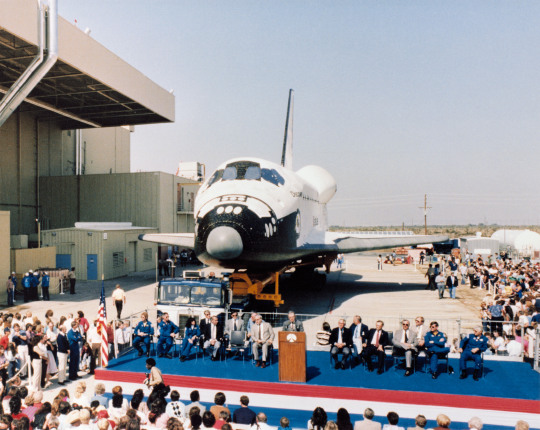

Rollout Ceremony for the third operational orbiter, Discovery (OV-103) at Palmdale, California. On the stage is the Don Beall of Rockwell (at lectern), Dr. Rocco A. Petrone, the president of the company and the crew of her first first flight STS-41-D.




She is named for several different ships:
"The name Discovery was chosen to carry on a tradition based on ships of exploration, primarily HMS Discovery, one of the ships commanded by Captain James Cook during his third and final major voyage from 1776 to 1779, and Henry Hudson's Discovery, which was used in 1610–1611 to explore Hudson Bay and search for a Northwest Passage. Other ships bearing the name have included HMS Discovery of the 1875–1876 British Arctic Expedition to the North Pole, and RRS Discovery, which carried the 1901–1904 Discovery Expedition to Antarctica, led by Captain Scott."
-information from Wikipedia: link
At the beginning of her career, Discovery weighed roughly 3,600 kg (7,900 lb) less than Columbia due to lessons learned during the construction and testing of Enterprise, Columbia and Challenger. She weighs 6 pounds (2.7 kg) heavier than Atlantis and 363 pounds (165 kg) heavier than Endeavour. Part of this was due to the greater use of quilted AFRSI blankets rather than the white LRSI tiles on the fuselage, and the use of graphite epoxy instead of aluminum for the payload bay doors and some of the wing spars and beams.

"During her construction, Discovery was fitted with several black tiles near the middle starboard window where there should have been white tiles. It is unknown if this was the result of a harmless manufacturing mishap or done intentionally to give a distinctive look to the shuttle. This feature has been called 'teardrop' and allowed Discovery to be easily identified.
Upon her delivery to the Kennedy Space Center in 1983, Discovery was modified alongside Challenger to accommodate the liquid-fueled Centaur-G booster, which had been planned for use beginning in 1986 but was cancelled in the wake of the Challenger disaster."
She was originally intended to be the dedicated US Air Force shuttle and launch DoD payloads from SLC-6 at Vandenberg AFB but these plans were cancelled in aftermath of the Challenger disaster.
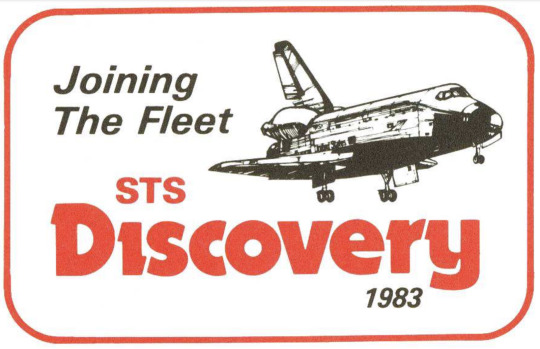
Commemorative stamp from Rockwell International (source)
Construction milestones:
1979 January 29: contract award to Rockwell International's Space Transportation Systems Division in Downey, California
1979 August 1: start long lead fabrication of upper forward-fuselage, Downey
1979 August 27: start long lead fabrication of Crew Module, Downey
1980 March 3: start fabrication aft-fuselage, Downey
1980 June 20: start fabrication lower forward-fuselage, Downey
1980 September 29: start assembly of Crew Module, Downey
1980 October 1: start fabrication/assembly of mid-fuselage, San Diego
1980 November 10: start assembly of aft-fuselage
1980 December 8: start initial system installation aft fuselage
1981 March 2: start fabrication/assembly of payload bay doors, Tulsa
1981 June 1: start fabrication of vertical stabilizer, Fairchild-Republic
1981 October 19: start fabrication/assembly of body flap, Downey
1981 October 26: start initial system installation, crew module, Downey
1982 January 4: start initial system installation upper forward fuselage, Downey
1982 March 16: mid-fuselage on dock, Palmdale
1982 March 30: Elevons on dock, Palmdale
1982 April 30: Wings on dock, Palmdale
1982 April 30: lower forward-fuselage on dock, Palmdale
1982 July 16: upper forward-fuselage on dock, Palmdale
1982 August 5: vertical stabilizer on dock, Palmdale
1982 September 3: start of final assembly
1982 October 15: body flap on dock, Palmdale
1982 December 28: crew module on dock, Palmdale
1983 January 11: aft-fuselage on dock, Palmdale
1983 February 25: forward RCS module on dock, Palmdale
1983 February 25: complete final assembly and closeout installation, Palmdale
1983 February 28: start initial subsystems test, power-on, Palmdale
1983 May 13: complete initial subsystems testing
1983 July 26: complete subsystems testing
1983 August 12: completed final acceptance
1983 October 16: Rollout from Palmdale
1983 October 28: SSME on dock, KSC
1983 November 5: overland delivery to Edwards AFB
1983 November 6: ferry flight to Vandenberg AFB
1983 November 8: ferry flight to Carswell AFB
1983 November 9: ferry flight to KSC
1983 November 15: transport to OPF and start modifications, KSC
1983 December 9: transfer to VAB for storage, KSC
1983 December 22: SSME on dock, KSC
1984 January 3: transfer to OPF, KSC
1984 January 5: SSME on dock, KSC
1984 May 12: transfer to VAB, KSC
1984 June 2: flight readiness firing of SSME, LC-39A
1984 June 25: Conduct STS-41-D, first flight, launch KSC, launch scrubbed at T-9 minutes due to general-purpose computer No. 5 disparity with primary set of general-purpose computers.
1984 June 26: Conduct STS-41-D, first flight, launch KSC, launch postponed indefinitely due to shutdown of SSMEs 3 and 2 at T-4 seconds due to slow opening of SSME 3 main fuel valve, SSME I never received a start command.
1984 July 14: rollback from Launch Complex 39-A to VAB, KSC, for remanifest of payloads
1984 July 17: transfer to OPF for reconfiguration of payload bay and for remanifest of payloads
1984 August 2: transfer to VAB and remate with SRB and ET
1984 August 9: rollout to LC-39A
1984 August 28: remanifest 41 D mission launch for Aug. 29, postponed for 24 hours for software verification
1984 August 30: launch of STS-41-D
Date: October 16, 1983
NASA ID: S84-30898
source, source, source, source, source, source
#Space Shuttle#Space Shuttle Discovery#Discovery#OV-103#Orbiter#NASA#Space Shuttle Program#rollout ceremony#Rockwell International#Palmdale#California#October#1983#my post
58 notes
·
View notes
Text
The Future of Online Auctions: Trends and Innovations in Digital Bidding

The landscape of online auctions in MN has transformed significantly in the last few years, fueled by advancements in technology, changing consumer preferences, and the rise of new business models. As more people gravitate towards online platforms for buying and selling, the digital auction space continues to evolve with exciting trends and innovations that shape the future of this dynamic marketplace.
The Rise of AI and Machine Learning in Auctions
One of the most notable trends in online auctions is the integration of artificial intelligence (AI) and machine learning (ML) to enhance user experiences and streamline processes. AI-driven algorithms can predict customer preferences and personalize auction recommendations, allowing buyers to discover relevant items more easily. These tools also help sellers determine optimal listing prices, timing, and product descriptions based on market trends.
AI and ML have also improved fraud detection and bid monitoring, ensuring the integrity of the bidding process. As these technologies evolve, expect online auctions to become more secure and user-friendly.
Blockchain Technology: A New Era of Transparency
Blockchain technology is revolutionizing industries across the globe, and online auctions are no exception. By enabling decentralized, immutable ledgers, blockchain offers unprecedented levels of transparency and security. With blockchain-based platforms, bidders can have full confidence that the bidding process is fair, and sellers are assured that transactions are legitimate.
This technology also helps address challenges like counterfeit items and ownership disputes, which have plagued online auctions in the past. Blockchain-based smart contracts ensure that once an auction is completed, both parties adhere to the agreed-upon terms, automating processes such as payment transfers and ownership exchanges.
Online Liquidation Sales: An Expanding Opportunity
Online liquidation sales have gained significant traction in recent years, offering a new outlet for businesses and individuals to sell surplus inventory, closeout items, or returned products. These sales present buyers with opportunities to snag products at lower prices while giving sellers a fast way to recover cash from unsold stock.
As online liquidation sales grow in popularity, auction platforms have adapted by offering specialized categories and streamlined processes for these types of sales. Whether it’s consumer electronics, fashion, or industrial equipment, liquidations provide a unique opportunity for both sellers and buyers, often featuring bulk auctions or limited-time offers. This trend is expected to continue flourishing, particularly as more companies explore liquidation as a cost-effective inventory management strategy.
Mobile Bidding: Convenience in the Palm of Your Hand
The shift towards mobile commerce has made online auctions more accessible than ever before. With mobile bidding apps, users can now participate in auctions from anywhere in the world, at any time. These apps provide real-time notifications, allowing bidders to stay informed on the progress of auctions, even when they’re on the go.
Mobile bidding technology also enables features like one-click bidding, making the auction process faster and more seamless. As smartphones and mobile devices continue to dominate online interactions, mobile bidding will play an increasingly pivotal role in the future of online auctions.
Virtual Reality (VR) and Augmented Reality (AR) Transformations
Imagine being able to virtually "walk" through a gallery of auction items, examining them from every angle before placing your bid—all from the comfort of your home. Virtual reality (VR) and augmented reality (AR) are set to revolutionize the online auction experience by creating immersive, interactive environments for bidders.
AR allows users to visualize items in their own space, such as furniture or artwork, by using their smartphone camera to overlay digital images in real-time. This added dimension of interaction not only enhances the buyer's confidence but also increases the chances of a sale. Similarly, VR is poised to provide virtual previews of high-value items such as real estate, cars, or rare collectibles, offering buyers a more authentic experience than static images alone.
Cryptocurrency Integration: New Payment Methods
As digital currencies like Bitcoin and Ethereum gain widespread acceptance, the future of online auctions will likely involve seamless cryptocurrency integration. Some auction platforms have already begun accepting cryptocurrencies as a payment option, appealing to tech-savvy consumers who prefer these alternatives over traditional payment methods.
Cryptocurrencies offer faster, low-fee transactions that can be processed globally, making them an attractive option for cross-border auction transactions. This innovation in payment methods could expand the reach of online auctions, allowing bidders from various parts of the world to participate without the hassle of currency conversions or international banking fees.
Sustainability and Ethical Auctions
As environmental and ethical concerns grow, buyers are increasingly looking for sustainable and responsible ways to shop. Online auctions are responding by promoting second-hand items, antiques, and liquidation stock as eco-friendly alternatives to purchasing new products.
In this context, online liquidation sales also play a vital role by reducing waste and promoting a circular economy. Selling excess stock and returned items at auction prevents them from ending up in landfills, offering buyers the chance to give these products a second life.
Conclusion
The future of online auctions is being shaped by innovative trends such as AI, blockchain, mobile technology, VR, and cryptocurrency. As consumer demands and technological capabilities continue to evolve, so will the online auction space, offering faster, more transparent, and more engaging experiences for buyers and sellers alike. With the growing role of online liquidation sales, we can expect even more opportunities for businesses to recover value from surplus stock while providing consumers with great deals. As these innovations unfold, the digital bidding world is set to become an even more dynamic and accessible marketplace.
0 notes
Text
Manholcon’s Services for Managing Complex Construction Projects in NYC
Managing construction projects in New York can be overwhelming with budget overruns, missed deadlines, and intricate processes. 😩 As New York’s Construction Project Manager, Manholcon offers comprehensive project management services to tackle these issues and ensure project success. Their services include: • Project Management Services • Procurement & Contracts • Design Development • Construction Administration • Budget & Cost Management • Schedule & Logistics Management • Quality Assurance & Control • Risk Planning & Mitigation Manholcon manages every stage of the project life cycle, from initiation and planning to execution, monitoring, and closeout. Their commitment to delivering excellence and managing complex projects makes them a standout choice. For more details on their services and how they can help your project succeed, check out their services page. Contact Manholcon today to get started! 🚀

0 notes
Text
The Role of Construction Lawyers in Delhi: Protecting Your Interests

When it comes to the construction industry in Delhi, the stakes are high. Whether you’re a developer, contractor, or property owner, the complexities of construction projects require more than just architectural and engineering expertise. Legal challenges can arise at any stage, and without the right legal guidance, these issues can lead to significant financial losses, delays, or even the collapse of a project. This is where construction lawyers in Delhi come into play, acting as your shield and guide through the legal intricacies of the construction world.
Understanding Construction Law in Delhi
Delhi's construction sector is governed by a web of regulations, contracts, and compliance requirements. From zoning laws and environmental regulations to contractual obligations and labor laws, the legal landscape is intricate and constantly evolving. Construction lawyers are specialized legal professionals who have a deep understanding of these laws and how they apply to various construction projects.
1. Drafting and reviewing contracts
Contracts are the backbone of any construction project. They define the scope of work, timelines, payment terms, and responsibilities of all parties involved. A well worded contract can help minimize future misunderstandings and problems. Construction lawyers play a crucial role in drafting, reviewing, and negotiating contracts to ensure they are fair, clear, and enforceable. They help you avoid potential pitfalls by addressing issues such as delay penalties, change orders, and dispute resolution mechanisms upfront.
2. Navigating Regulatory Compliance
Construction projects in Delhi must comply with a myriad of local, state, and national regulations. These include building codes, safety standards, environmental laws, and land use regulations. Noncompliance can lead to hefty fines, project delays, and even legal action. Construction lawyers guide you through the regulatory maze, ensuring that your project meets all legal requirements. They help you obtain necessary permits, avoid violations, and stay on the right side of the law.
3. Handling Disputes and Litigation
Conflicts are a regrettable but typical aspect of the construction sector. They can arise over issues such as project delays, cost overruns, contract breaches, or defective work. When disputes occur, having a construction lawyer on your side is invaluable. They represent your interests in negotiations, mediation, arbitration, or litigation, working to resolve disputes in a manner that minimizes the impact on your project and finances.
4. Managing Risks
Construction projects inherently involve risks, from financial uncertainties to unforeseen site conditions and design changes. Construction lawyers help you identify, assess, and manage these risks effectively. They draft contracts with risk allocation clauses, advise on insurance coverage, and help develop contingency plans. By proactively managing risks, they protect your interests and help ensure the smooth progress of your project.
5. Assisting with Project Financing
A crucial component of every construction project is obtaining money. Construction lawyers assist in structuring financing agreements, ensuring that they are legally sound and aligned with your project’s needs. They also help navigate the legal complexities of various financing options, such as loans, joint ventures, or public-private partnerships. Their expertise ensures that your project is financially viable and legally secure.
6. Ensuring Proper Documentation
Documentation is key to a successful construction project. From initial bids to final project closeout, every stage involves a plethora of documents that need to be carefully drafted, reviewed, and maintained. Construction lawyers ensure that all documentation is accurate, complete, and legally compliant. This not only helps in smooth project execution but also provides a strong legal foundation in case of disputes.
7. Facilitating smooth project execution
Multiple parties are involved in construction projects, such as developers, contractors, subcontractors, suppliers, and government officials. Coordinating among these parties can be challenging, and miscommunication or conflicts can derail a project. Construction lawyers act as intermediaries, ensuring that all parties are on the same page and that the project progresses according to plan. They facilitate communication, resolve issues promptly, and keep the project on track.
8. Protecting Intellectual Property Rights
In today’s construction industry, innovation is key. Whether it’s a unique design, a proprietary construction method, or a specialized material, protecting your intellectual property (IP) is crucial. Construction lawyers help you secure patents, trademarks, or copyrights for your innovations, ensuring that your IP rights are protected. They also advise on licensing agreements, helping you monetize your innovations while maintaining legal control.
9. Advocating for You in Government Relations
In Delhi, construction projects often require interaction with government authorities, from obtaining permits to complying with environmental regulations. Navigating these bureaucratic processes can be challenging, especially when faced with delays or disputes. Construction lawyers advocate on your behalf, engaging with government agencies, addressing regulatory issues, and ensuring that your project complies with all legal requirements.
10. Safeguarding Your Long-Term Interests
Beyond the immediate needs of a construction project, construction lawyers look out for your long-term interests. They help structure deals that align with your business goals, advise on sustainable practices that comply with environmental regulations, and ensure that your project contributes to your long-term success. By safeguarding your interests, they help you build not just structures but lasting values.
Conclusion
On this basis, it must be noted that the construction industry of Delhi is rather vast and also rather difficult, and therefore, legal knowledge is not only a bonus but also a crucial necessity. Construction lawyers help prevent or contain problems that would otherwise affect your business from the conceptualization of a project to its delivery and even after. Through compliance, risk, and legal issues, they assist in keeping legal issues on your side and ensure that they do not interrupt the flow of the project. It therefore goes without saying that whichever side of the construction industry one may be in, be it as a developer, contractor or owner, the ultimate asset is the services of a construction lawyer.
1 note
·
View note